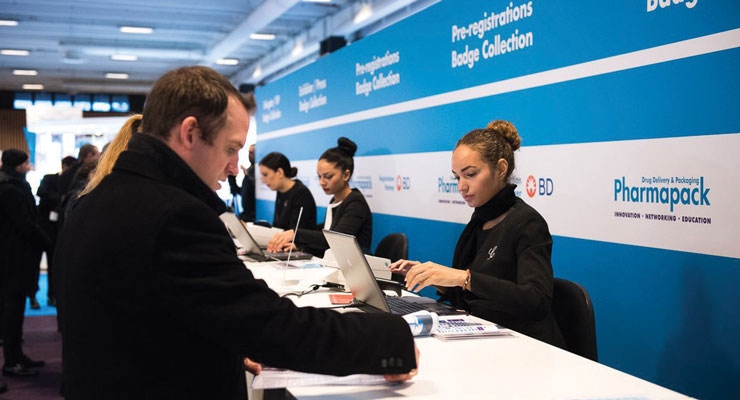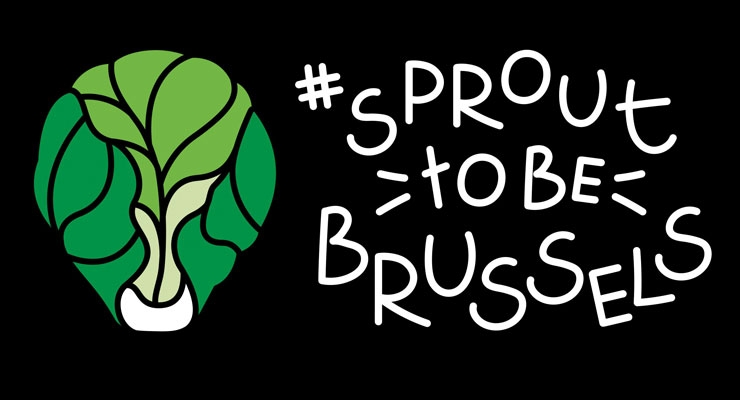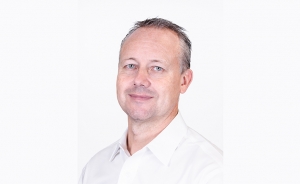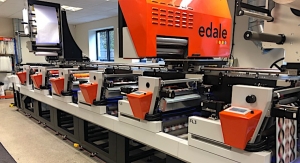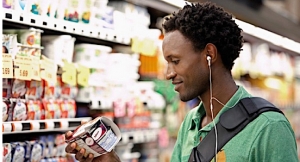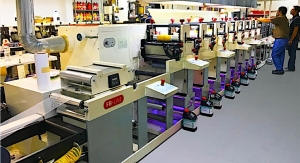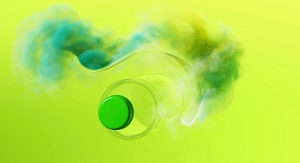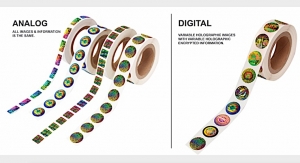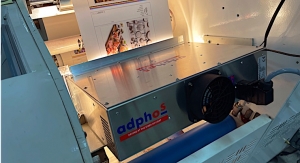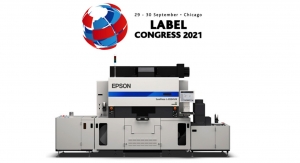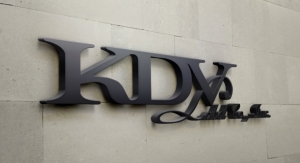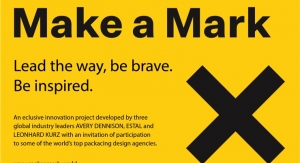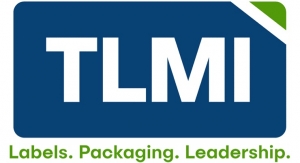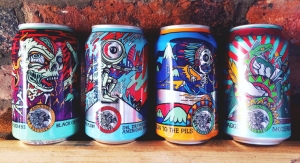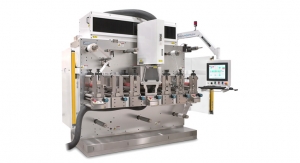John Penhallow03.09.18
The name of Count Lev Perovski may not be familiar to all readers of this column, but it was he who, in 1839, discovered and named perovskite, a compound of calcium, oxygen and titanium. This remained a geological curiosity until 10 years ago when a Japanese team discovered that certain perovskites are semi-conductors. Unlike the silicon-based semi-conductors that permeate every part of today’s life, and which are brittle, the perovskite semi-conductors can be printed in roll-to-roll production. They have several drawbacks, including not liking damp conditions, but could potentially lead to that El Dorado, the fully flexible smart label. One of the first uses of the new material is likely to be in producing cheaper solar cells. Other uses could be in the construction sector, or in a wide range of label applications ranging from logistics to pharmaceuticals.
Linerless labels
The linerless label has been described, unkindly, as a product with a great future behind it. Brand owners love the idea but are wary of the cost and speed of the labeling equipment needed for linerless. For many years, Italy’s Ritrama has been in the forefront of linerless developments. The company has announced a breakthrough – unsurprisingly – in direct thermal labels, of the kind used in price-weigh machines. These labels are generally one-color printed, but Ritrama offers them in a range of background colors. Ritrama’s Sergio Veneziani does not give figures but says sales volumes are growing significantly. “January 2018 has already exceeded the forecasts we made at the end of 2017,” he says. “As far as retail is concerned, this positive trend surely results from the fact that traditional weigh scales, which work with standard rolls, are being replaced with linerless scales. As for our products, Ritrama is currently working on a new version of Direct Thermal Linerless with a special adhesive for frozen products.”
Into the cold - Labels in Russia and the ‘near abroad’
In January of this year, the two Moscow exhibitions, Upakovka and Interplastika, hosted 900 exhibitors and visitors, totaling around 25,000 people. Show organizers Messe Düsseldorf reported continuing growth of the Russian packaging market. “Now that business in Russia is gaining momentum again, our foreign exhibitors noted the high degree of interest of Russian businessmen and their willingness to place orders,” enthused Werner Dornscheidt of Messe Düsseldorf. But few, if any, of the big names in narrow web converting turned up. HP Indigo was present, but there were no other narrow web press manufacturers. Asked why they didn’t exhibit this year, a major label pressmaker told your correspondent, “The Russian market is very quiet, we have seen few investments lately.” Label converter CCL, present in most of the world’s markets, operates a plant in Podolsk, just outside Moscow. Gallus has an agency office in Ukraine but interestingly does not list one in Russia. Neither company exhibited at the Moscow shows. The Russian winter this January was cold, as Napoleon learned to his cost some years back, but no colder than usual. Sanctions are unlikely to be the reason, as they hit mostly Russia’s agricultural imports. A more likely reason is the slow but continuing fall in the country’s industrial production.
For Russians, the term “near abroad” refers to those countries that became independent after the breakup of the USSR. Many of these, like Ukraine and Belarus, are beset with problems, both political and economic. The three Baltic States, though very different from each other, are small but promising markets for labels and packaging. All three have the euro as their currency, and all three, just after independence, were quick to apply for membership to NATO (a glance at the map tells you why). Though, for historical reasons, we group the three together. Estonia, the northernmost, is closely linked to Finland, both by geography and language. UPM Raflatac is Estonia’s main supplier of labelstock, and Estonian converters like LabelPrint OÜ export both to Finland and to other parts of Scandinavia. Further south, in Latvia and Lithuania, the Finnish influence gives way to Swedish and German commercial partnerships. That has not stopped Britain’s Domino from signing an agency agreement with Lipnus in the Lithuanian capital Tallin. Domino sees markets in these states for its digital inkjet label presses. Lipnus also represents Alpha Cure and supplies labelstock, UV lamps, plates and inks throughout Lithuania and to the bordering states of Latvia, Belarus and Russia’s Kaliningrad enclave.
Pharmapack catches a cold
This year’s Pharmapack show in Paris was one-third bigger than in 2017, no doubt buoyed by this country’s reputation as the biggest pill-pusher in Europe. Alas, just before the opening of this two-day show, the city had its heaviest snowfall in years. Brushing the snow off his boots, your correspondent was pleased to find that most exhibitors had plenty of time to answer his questions. The label sector was well represented at the show, with a dozen or more converters, including market leaders Reynders, Autajon, Schreiner MediPharm and Labelys. Most were showing the tamper-proof closures and serialization technologies that will become mandatory next year. UPM Raflatac and Avery Dennison both talked up their pharma-specific labelstock and other security solutions. Track-and-trace was the buzzword for many exhibitors, including Atlantic Zeiser and ATT. Pharmapack 2018 attracted few machinery producers (Domino was an exception) and unlike Labelexpo, the exhibition has a genteel, the-doctor-will-see-you-now atmosphere. The very full program of lectures included such recondite topics as “Thoughts on the ongoing revisions of EN ISO 11607…” Happily for the organizers, the snow was largely cleared by the second day of the show, and there were more visitors around. Most exhibitors seemed happy, but one whispered that he had met just two good prospects at his booth, “And not just because of the snow.”
The times they-are-a-changin’
In the bad old days, globalization was generally perceived in Europe as being the way American firms invested overseas to establish their brands worldwide. Nowadays some of the boots are on the other feet. Few consumers even in the US know that Kraft Heinz is Brazilian-owned, and now another American icon has come under the hammer. In January 2018, Dr Pepper Snapple, the world’s fifth biggest producer of soft drinks, was acquired by an investment group controlled by Germany’s Reimann family. Even though it’s unproven whether these and similar acquisitions will benefit label converters like the German-Brazilian All4Labels Group, it certainly won’t do them any harm.
Seawater-resistant labels
Herma is fast becoming a brand to be reckoned with in Europe, often mentioned in the same breath as Avery Dennison and UPM Raflatac. Herma’s latest labelstock production line, with its ability to lay down two different adhesive layers, has opened up possibilities to get the best of both worlds in many specialty PS materials. Herma’s latest product is a label guaranteed to meet the accepted European norm for seawater resistance (BS 5609 certificate, Section 2). For most products used in the chemical industry, this certification is required. It requires the label to be stored for three months in seawater without coming adrift. This allows labeled containers to be transported by sea without any problems, and equally important it means label converters can supply their customers with a certified product without going through the expense of testing it themselves. Watertight labelstock is one thing, however, and water-resistant inks are another. Now, after exhaustive tests carried out in cooperation with inks manufacturer Siegwerk, Herma guarantees that certain flexo inks will ensure compliance with the relevant certification. Specified inkjet inks have already been approved, as has thermal-transfer printing when a Zebra printer is used.
Shrink labeling grows
Label association FINAT and industry analyst AWA agree that shrink sleeve labeling is a vibrant part of the label business, with growth rates up to 7% annually. Your correspondent took a trip to his local (French) supermarket and found that sleeve labels were used to decorate one in five of plastic-bottled household products. Not statistically proven but a pretty good indicator, this view is shared just over the Pyrenees by Spanish label converter Ovelar. Its latest investment is an MPS flexo and gravure combination press – its fourth from this Netherlands manufacturer – specially designed for shrink label production. The new press, according to MPS commerical director Eric Hoendervangers, is for making highly complex shrink sleeves and is especially competitive for short runs. Spain’s label market is expanding at above the European average, according to Iban Cid of label converter Germark. However, the country has still not fully recovered from the financial crisis of 2008-09 when unemployment hit 30% and the bottom dropped out of the property market. For the record, unemployment is now down to 16%, still the second highest in Europe after Greece, and holiday homes that could be picked up for a song are now inching up in value.
Tale of a sprout
Fifty-six thousand stickers is not the order of the century for a label converter, but this one comes with a difference. For the city fathers of Brussels have decided in their wisdom to festoon their city with stickers, badges and t-shirts marked “sprout to be Brussels.” Buses, cars and public buildings are all sprouting the slogan, despite the fact that many non-English-speakers may not get the joke, which isn’t much of a joke anyway. There is incidentally no truth to the rumor that Belgian farmers developed the sprout because the narrow lanes of Belgian cities could not accommodate shoppers trundling full-sized cabbages. A pity, it makes a nice story.
Linerless labels
The linerless label has been described, unkindly, as a product with a great future behind it. Brand owners love the idea but are wary of the cost and speed of the labeling equipment needed for linerless. For many years, Italy’s Ritrama has been in the forefront of linerless developments. The company has announced a breakthrough – unsurprisingly – in direct thermal labels, of the kind used in price-weigh machines. These labels are generally one-color printed, but Ritrama offers them in a range of background colors. Ritrama’s Sergio Veneziani does not give figures but says sales volumes are growing significantly. “January 2018 has already exceeded the forecasts we made at the end of 2017,” he says. “As far as retail is concerned, this positive trend surely results from the fact that traditional weigh scales, which work with standard rolls, are being replaced with linerless scales. As for our products, Ritrama is currently working on a new version of Direct Thermal Linerless with a special adhesive for frozen products.”
Into the cold - Labels in Russia and the ‘near abroad’
In January of this year, the two Moscow exhibitions, Upakovka and Interplastika, hosted 900 exhibitors and visitors, totaling around 25,000 people. Show organizers Messe Düsseldorf reported continuing growth of the Russian packaging market. “Now that business in Russia is gaining momentum again, our foreign exhibitors noted the high degree of interest of Russian businessmen and their willingness to place orders,” enthused Werner Dornscheidt of Messe Düsseldorf. But few, if any, of the big names in narrow web converting turned up. HP Indigo was present, but there were no other narrow web press manufacturers. Asked why they didn’t exhibit this year, a major label pressmaker told your correspondent, “The Russian market is very quiet, we have seen few investments lately.” Label converter CCL, present in most of the world’s markets, operates a plant in Podolsk, just outside Moscow. Gallus has an agency office in Ukraine but interestingly does not list one in Russia. Neither company exhibited at the Moscow shows. The Russian winter this January was cold, as Napoleon learned to his cost some years back, but no colder than usual. Sanctions are unlikely to be the reason, as they hit mostly Russia’s agricultural imports. A more likely reason is the slow but continuing fall in the country’s industrial production.
For Russians, the term “near abroad” refers to those countries that became independent after the breakup of the USSR. Many of these, like Ukraine and Belarus, are beset with problems, both political and economic. The three Baltic States, though very different from each other, are small but promising markets for labels and packaging. All three have the euro as their currency, and all three, just after independence, were quick to apply for membership to NATO (a glance at the map tells you why). Though, for historical reasons, we group the three together. Estonia, the northernmost, is closely linked to Finland, both by geography and language. UPM Raflatac is Estonia’s main supplier of labelstock, and Estonian converters like LabelPrint OÜ export both to Finland and to other parts of Scandinavia. Further south, in Latvia and Lithuania, the Finnish influence gives way to Swedish and German commercial partnerships. That has not stopped Britain’s Domino from signing an agency agreement with Lipnus in the Lithuanian capital Tallin. Domino sees markets in these states for its digital inkjet label presses. Lipnus also represents Alpha Cure and supplies labelstock, UV lamps, plates and inks throughout Lithuania and to the bordering states of Latvia, Belarus and Russia’s Kaliningrad enclave.
Pharmapack catches a cold
This year’s Pharmapack show in Paris was one-third bigger than in 2017, no doubt buoyed by this country’s reputation as the biggest pill-pusher in Europe. Alas, just before the opening of this two-day show, the city had its heaviest snowfall in years. Brushing the snow off his boots, your correspondent was pleased to find that most exhibitors had plenty of time to answer his questions. The label sector was well represented at the show, with a dozen or more converters, including market leaders Reynders, Autajon, Schreiner MediPharm and Labelys. Most were showing the tamper-proof closures and serialization technologies that will become mandatory next year. UPM Raflatac and Avery Dennison both talked up their pharma-specific labelstock and other security solutions. Track-and-trace was the buzzword for many exhibitors, including Atlantic Zeiser and ATT. Pharmapack 2018 attracted few machinery producers (Domino was an exception) and unlike Labelexpo, the exhibition has a genteel, the-doctor-will-see-you-now atmosphere. The very full program of lectures included such recondite topics as “Thoughts on the ongoing revisions of EN ISO 11607…” Happily for the organizers, the snow was largely cleared by the second day of the show, and there were more visitors around. Most exhibitors seemed happy, but one whispered that he had met just two good prospects at his booth, “And not just because of the snow.”
The times they-are-a-changin’
In the bad old days, globalization was generally perceived in Europe as being the way American firms invested overseas to establish their brands worldwide. Nowadays some of the boots are on the other feet. Few consumers even in the US know that Kraft Heinz is Brazilian-owned, and now another American icon has come under the hammer. In January 2018, Dr Pepper Snapple, the world’s fifth biggest producer of soft drinks, was acquired by an investment group controlled by Germany’s Reimann family. Even though it’s unproven whether these and similar acquisitions will benefit label converters like the German-Brazilian All4Labels Group, it certainly won’t do them any harm.
Seawater-resistant labels
Herma is fast becoming a brand to be reckoned with in Europe, often mentioned in the same breath as Avery Dennison and UPM Raflatac. Herma’s latest labelstock production line, with its ability to lay down two different adhesive layers, has opened up possibilities to get the best of both worlds in many specialty PS materials. Herma’s latest product is a label guaranteed to meet the accepted European norm for seawater resistance (BS 5609 certificate, Section 2). For most products used in the chemical industry, this certification is required. It requires the label to be stored for three months in seawater without coming adrift. This allows labeled containers to be transported by sea without any problems, and equally important it means label converters can supply their customers with a certified product without going through the expense of testing it themselves. Watertight labelstock is one thing, however, and water-resistant inks are another. Now, after exhaustive tests carried out in cooperation with inks manufacturer Siegwerk, Herma guarantees that certain flexo inks will ensure compliance with the relevant certification. Specified inkjet inks have already been approved, as has thermal-transfer printing when a Zebra printer is used.
Shrink labeling grows
Label association FINAT and industry analyst AWA agree that shrink sleeve labeling is a vibrant part of the label business, with growth rates up to 7% annually. Your correspondent took a trip to his local (French) supermarket and found that sleeve labels were used to decorate one in five of plastic-bottled household products. Not statistically proven but a pretty good indicator, this view is shared just over the Pyrenees by Spanish label converter Ovelar. Its latest investment is an MPS flexo and gravure combination press – its fourth from this Netherlands manufacturer – specially designed for shrink label production. The new press, according to MPS commerical director Eric Hoendervangers, is for making highly complex shrink sleeves and is especially competitive for short runs. Spain’s label market is expanding at above the European average, according to Iban Cid of label converter Germark. However, the country has still not fully recovered from the financial crisis of 2008-09 when unemployment hit 30% and the bottom dropped out of the property market. For the record, unemployment is now down to 16%, still the second highest in Europe after Greece, and holiday homes that could be picked up for a song are now inching up in value.
Tale of a sprout
Fifty-six thousand stickers is not the order of the century for a label converter, but this one comes with a difference. For the city fathers of Brussels have decided in their wisdom to festoon their city with stickers, badges and t-shirts marked “sprout to be Brussels.” Buses, cars and public buildings are all sprouting the slogan, despite the fact that many non-English-speakers may not get the joke, which isn’t much of a joke anyway. There is incidentally no truth to the rumor that Belgian farmers developed the sprout because the narrow lanes of Belgian cities could not accommodate shoppers trundling full-sized cabbages. A pity, it makes a nice story.

